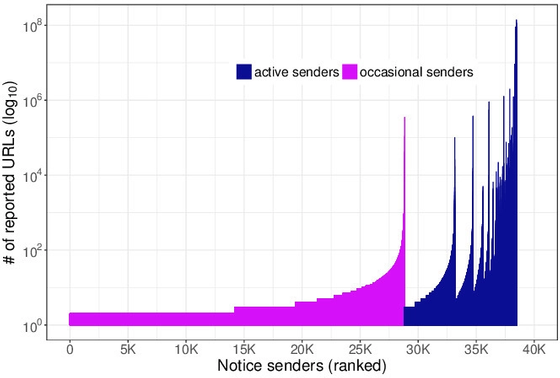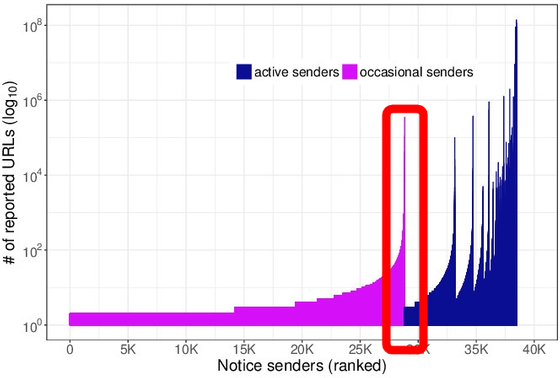95% of online removal requests are in the top 10%, and a few voices may be drowned out

by
There are a lot of contents and writings on the Internet that are inappropriate or infringing on the rights of others, so a mechanism for ' application for deletion ' of such contents is indispensable. It can be said. However, the analysis results of deletion requests made online made it clear that there are a huge number of deletion requests being made by a handful of applicants.
Who Watches the Watchmen: Exploring Complaints on the Web
https://dl.acm.org/citation.cfm?doid=3308558.3313438
SE-Online complaint system used by Google and Twitter is like the 'Wild West'-Queen Mary University of London
https://www.qmul.ac.uk/media/news/2019/se/online-complaint-system-used-by-google-and-twitter-is-like-the-wild-west.html
A research group at the University of London, Queen Mary, UK, has received more than 1.05 billion over 1 year from January 1, 2017 to December 31, 2017, for services such as Google, Twitter, Bing and Vimeo. Analyzed deletion request. As a result, we found that about 1 billion, or about 95% of the total, was made by the top 10% of applicants.
In the following figure, the vertical axis shows the number of URLs that were subject to application in logarithm , the purple part on the horizontal axis is `` people who filed claims for one day during the period '', and the scarlet part is `` period People who filed complaints over multiple days. ' You can see that the dark blue part is further divided according to the number of days of the claim. If you look at the graph, you can see that many of those who applied for only one day report less than 100 URLs, and those who applied for more than one day have reported many URLs.

According to the survey, 99.92% of the applications for deletion were made by the top 25% of applicants, and the remaining 75% of applicants were only 0.08%. In addition, when you look at the part shown in the red frame in the figure above, you can see that among the people who applied for only one day shown in purple, there are many people who applied by a large amount. This means that even some applicants who do not normally apply for deletion may make an explosive deletion application in just one day. Some cases of applicants who filed 350,000 deletion requests a day were also reported.

Also, after carefully examining the details of the application for deletion, more than 20% of the URLs targeted URLs that did not exist. This includes examples where content was deleted by a previous deletion request immediately before submitting the deletion request, but some of the content was repeatedly applied for content that did not already exist There were many. In addition, 98.6% of all applications for removal based on the Digital Millennium Copyright Act (DMCA) accounted for 98.6% of the total, but it was also found that only 9% were by the copyright holder. From this, it can be seen that there are some applicants who apply for countless removals on a case-by-case basis, regardless of whether the infringement of rights has actually been made.
The results of this research mean that service providers such as Google and Twitter are being forced to respond to huge deletion requests that include content that does not exist. As a result, the University of London has a risk of losing resources in responding to deletion requests issued by a small number of applicants and losing the majority of deletion applications that only require a small number of deletion requests. Rupert Markand points out.
The first author of the research report, Damilola Ibosiola, said, “When you block some content, you tend to think that it was deleted by the right holder, but in reality, the response of the huge complaints by the ecosystem created by the giant organization. It is the result of '. In addition, co-author Gareth Tyson pointed out that “the deletion application system is being abused,” and expressed the view that there is an urgent need to improve the rules to crack down on illegal content.
Related Posts:
in Note, Web Service, Posted by log1l_ks







